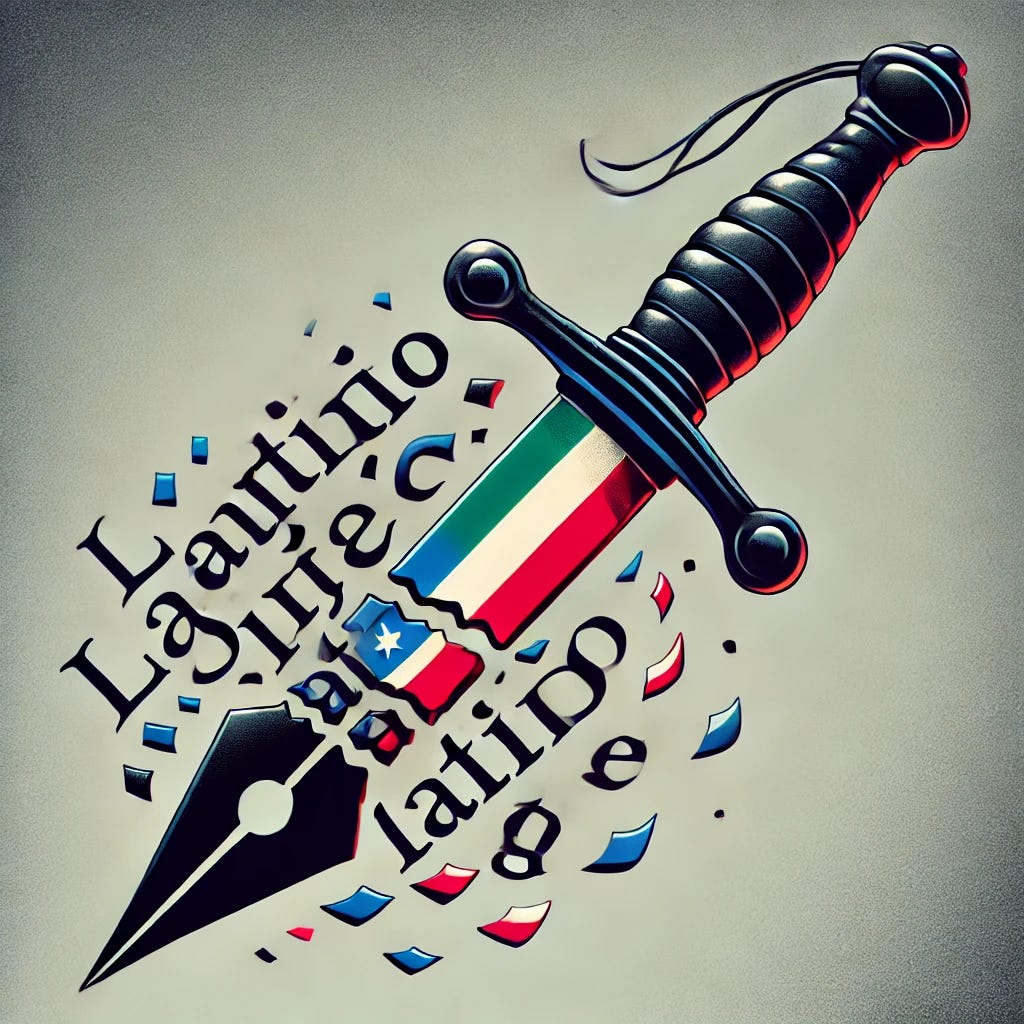As a nominalist, I approach the world with the belief that categories, names, and labels are human inventions, not reflections of some inherent reality. This perspective, which I’ve written about in previous posts, influences how I think about language and its power to shape how we see ourselves and others. The divide between nominalism and realism—two key philosophical schools of thought—is central to this discussion. Nominalists like myself argue that universals, such as terms like “Latino,” are mere labels we assign to group things together, while realists believe these terms point to actual, objective essences shared by the people or things they describe.
The reason I focus so intently on language is that the words we use matter deeply. They shape perceptions, define identities, and influence how people are seen by society—and how they see themselves. Labels like Latino, Latina, or Latinx are not neutral; they carry histories, assumptions, and cultural implications. By examining these terms through the lens of nominalism, I hope to challenge their supposed universality and propose alternatives that honor the rich diversity of the people they aim to describe. Language is never just a tool—it’s a framework for understanding the world, and this essay aims to explore why these frameworks often fall short.
The Meaning of "Latin"
The term "Latin" originates from the ancient Latin language, spoken by the Romans and used throughout the Roman Empire. Over time, it came to signify the Romance languages derived from Latin, such as Spanish, Portuguese, French, Italian, and Romanian. "Latin" also connotes cultural and historical ties to Europe, particularly the regions influenced by the Roman Empire. In this context, the term inherently centers European linguistic and cultural paradigms, which are vastly different from the Indigenous, African, and mestizo influences that define much of Latin America.
When applied to the peoples of Latin America, the term "Latin" imposes a Eurocentric lens that prioritizes colonial languages and histories while marginalizing the Indigenous and Afro-descendant identities that are integral to the region. By anchoring identity in language and European heritage, the term disregards the deep-rooted histories of the Aztec, Maya, Inca, and countless other Indigenous civilizations that predate colonization. Furthermore, it obscures the significant cultural contributions of African diasporic communities, whose histories are intertwined with the legacy of transatlantic slavery.
Mischaracterization and Homogenization
The terms Latino, Latina, and Latinx perpetuate the problematic application of "Latin" by homogenizing an incredibly diverse population. Latin America is not a monolith; it encompasses over 20 countries, each with distinct cultures, histories, and linguistic practices. Within these nations, there are additional layers of diversity, including Indigenous peoples, Afro-descendant communities, and mixed-race individuals, each with unique identities and experiences.
By using terms like Latino, Latina, and Latinx, these complexities are flattened into a single identity that often defaults to a mestizo, Spanish-speaking, and Catholic-centric norm. This homogenization erases the visibility of non-Spanish-speaking Indigenous groups, Portuguese-speaking Brazilians, and Afro-Latin Americans, among others. It also ignores the realities of Latin American communities living in the United States, whose identities are shaped by migration, assimilation, and the challenges of navigating a racialized society.
The term Latinx, introduced as a gender-neutral alternative to Latino and Latina, attempts to address inclusivity but often faces criticism for its imposition of an English-speaking framework onto a Spanish language that traditionally does not use the "x" as a gender-neutral marker. While well-intentioned, it can feel alien to the very communities it seeks to represent, underscoring the disconnection between the term and the lived experiences of its intended audience.
Proposing Alternative Frameworks
To move beyond these inaccurate and reductive terms, it is essential to center the voices and identities of the people being described. Any collective label should prioritize self-identification, reflect the region’s diversity, and acknowledge the multifaceted cultural and historical roots of its people. Here are some alternative approaches:
1. Regional Terms: Instead of relying on "Latino" or "Latinx," terms like "Latin American" or "Americano/a" can be more precise. These labels emphasize geographic origin without erasing the diversity within the region. For example, a Mexican-American might identify as "Latin American" when speaking of broader regional identity but would still retain the specificity of their Mexican heritage.
2. Indigenous and Afro-Descendant Recognition: Collective terms should explicitly include Indigenous and African identities, such as "Afro-Indigenous Peoples of the Americas" or "Afro-Latin American." This would honor the foundational contributions of these groups to the region's cultural and historical fabric.
3. Self-Identified Terminology: Instead of imposing labels, communities should be empowered to define their collective identity. For instance, some have proposed terms like "Abya Yala," an Indigenous phrase used by the Guna people to describe the Americas before colonization. This would shift the narrative away from colonial frameworks and toward Indigenous worldviews.
4. Plurality over Uniformity: Recognizing the diversity within the region might mean moving away from a single label altogether. Embracing plurality acknowledges that there is no one-size-fits-all identity for Latin American descendants. This approach might involve using multiple terms that reflect the region's varied cultures and histories.
Conclusion
Latino, Latina, and Latinx are terms that, while widely used, fail to capture the rich complexity of the peoples they attempt to describe. Rooted in a Eurocentric framework, these terms marginalize Indigenous, Afro-descendant, and other non-European identities while homogenizing a diverse population into an inaccurate and simplistic category. Moving forward, it is crucial to adopt terminology that reflects the self-identified realities of these communities, honors their diverse histories, and acknowledges their cultural richness. By doing so, we can foster a more inclusive and accurate understanding of what it means to belong to the vibrant tapestry of Latin American heritage.







